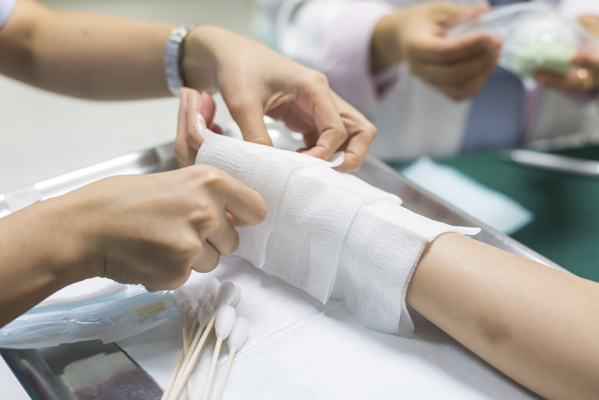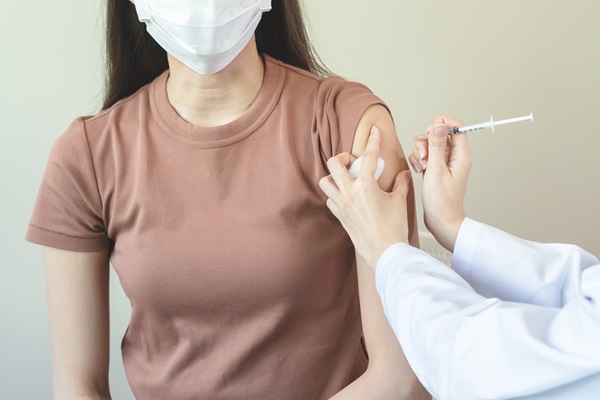Wound Care for Your Third-Degree Burn from a Primary Care

One of the things that a primary care physician can treat is a third-degree burn. This is one of the most severe types of burns and requires immediate medical attention. While many people may believe that these are the most painful types of burns, these burns can damage the nerve endings. This means that you may not feel any pain at all. To understand more about what a primary care physician can do for your third-degree burn, it is important to learn a little bit more about this type of burn.
What is a third-degree burn?
Another name for a third-degree burn is a full-thickness burn. In this type of burn, the entire outside layer of the skin has been destroyed, as well as the layer underneath. There are several potential causes of a third-degree burn, including:
- Scalding liquids
- Extremely hot objects
- Fires
- Chemicals
- Electrics
While the symptoms of a third-degree burn can vary, there are a few common symptoms of this type of burn. For example, the skin may appear dry and leathery. It may be colored yellow, black, brown, or white. The skin may also swell.
The patient may not feel any pain because the ends of the nerves have been destroyed. It is very important to get medical attention for third-degree burns. Without a doctor’s help, this type of burn will heal extremely slowly. Because two layers of skin and hair follicles have been destroyed, the patient will not have new skin growing.
Treating third-degree burns
Without treatment, this type of burn can lead to permanent scarring in the area. The muscles underneath may also be damaged, which means that the muscles can harden. This can lead to deformed joints. Most of the time, the doctor will need to remove the damaged skin so the area can properly heal.
As with any wound to the skin, there is a risk of infection to the area. A primary care physician may give the patient intravenous (IV) antibiotics. This can help prevent infection. The patient may also need to have IV fluids because the patient has lost fluids after the burn.
A primary care physician may recommend skin grafts so that the patient can have new skin. The skin may be grafted from another location on the patient’s body, or it may be synthetic skin. After the skin grafts have been placed, the primary care physician will place a dressing over the area. This dressing will need to be left in place for two to five days. The area will need to be left still so that the graft will not be disturbed. The patient should not rub the area.
Follow-up care
Keeping an eye on the patient’s wounds for signs of contracture, infection, and scarring is a major part of follow-up care for third-degree burns. Managing this type of wound in a hospital is ideal. Contractures and scarring mean that there will be long-term disability and disfigurement. These are indications of more detailed care.
Eventually, patients with third-degree burns will receive treatment as outpatients. The doctor will assess the level of pain during each visit. The doctor can adjust the pain medication if it is necessary. Visits will continue until new skin develops over the burned area. For persistent pain, the patient should have daily wound care until epithelialization occurs. After full epithelialization, the patient must have a follow-up checkup every four to six weeks.
For contractures and hypertrophic scarring
Scar contractures can bring about disability and disfigurement. Applying pressure on the burn wound can reduce hypertrophic scarring. Doctors with more experience in treating burn wounds can help heal the burn wound more quickly. Washing the burn scars and treating them with silicone gel every day can reduce the rashes and itchiness. The patient will need surgery if the contracture is not reduced significantly.
Coping
Once epithelialization occurs, the burned area will not need dressing changes anymore. The patient must apply unscented moisturizing cream to the area until the skin can moisturize itself. The moisturizer must not be an ointment or a thick wax. It must not have a high lanolin content as well. Applying a sun block with a protection factor of more than 15 can prevent hyperpigmentation until the wound’s red and pink color fades.
Itching can be an issue during healing. This can worsen with stress or heat. The patient can go through therapy to cope with post-traumatic stress, depression, and anxiety. Having someone assist the patient while healing is also ideal.
Visit a primary care physician today
If you have a third-degree burn, it is important to seek medical attention right away. This will facilitate your healing process. It will also reduce the likelihood of severe scarring. You may receive skin grafts to help your burns heal as quickly as possible.
Call us today at (832) 941-1894 for more information from Texas Urgent Care & Imaging Center.
Check out what others are saying about our services on Yelp: Read our Yelp reviews.
Recent Posts
Flu shots protect children from common strains of influenza. No one wants to be stuck in bed dealing with the symptoms of this common illness. A flu shot can help prevent complications and reduce the chances of catching the flu in the first place. A primary care or urgent care doctor can further discuss the…
Consulting your primary care physician, or "PCP," regularly can help ensure good health. This typically means every three years for most healthy adults under age 50. After your 50th birthday, annual physicals are advised. But what if you have a minor illness? It can be difficult to tell whether you should visit your PCP. This…
Immunizations are an important part of primary care. Not only can they help prevent illness, but they can also reduce the chance of complications should you get sick. Whether you want to get ahead of flu season or whatever else may come your way, your primary care doctor can provide the vaccinations you need.When many…
A walk-in clinic can provide you with the care that you need without the stress of waiting for an emergency doctor in a crowded room. Receiving immediate care is important whenever you are injured or sick. That is why choosing an urgent care clinic over an emergency room is ideal. Here are the benefits that…


